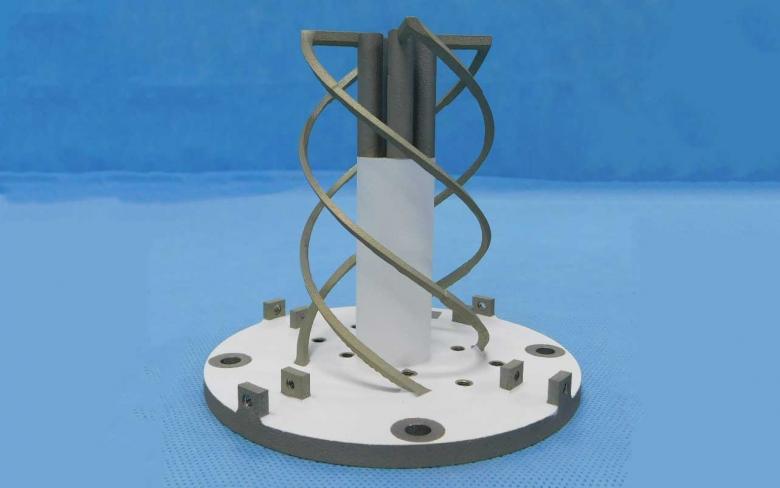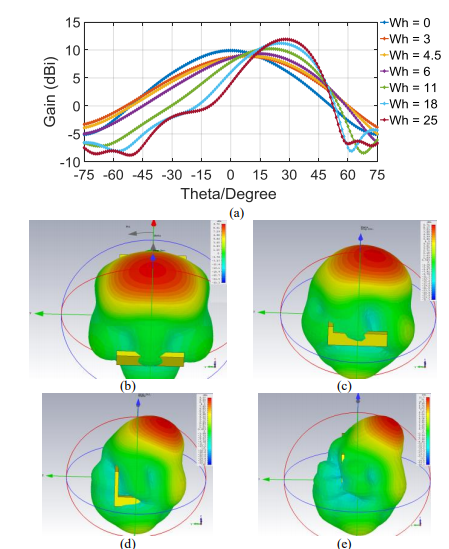UK-based researchers looked at use of 3D printing to manufacture low cost Multiple Input Multiple Output (MIMO) antennas for 5G communication systems.
These proposed MIMOs, fabricated using 3D printing, are capable of delivering beams in multiple directions, providing continuous, real-time coverage without the use of phase shifters. Additionally, they can operate at the 28 GHz 5G band with their wide bandwidth performance exceeding 4 GHz.
As such, the researchers have found that these antennas provide a low cost choice for enabling 5G and mm-wave applications, thanks to the use of 3D printing. Additionally, 3D printing has also facilitated complex design choices allowing the direction of the antenna’s beam to be altered, and for its directivity to be increased.

The benefits of 3D printing antennas
The researchers begin by outlining the impending standardization of 5G currently being implemented in most countries. A large improvement upon current technologies, 5G wireless technology is expected to improve overall system capacity by several hundred times, as well as increase the overall system throughput with higher spectral and energy efficiency, while minimizing the system latency. 5G will be introduced in countries with the following millimeter-wave (mm-wave) frequency bands: 24 GHz to 29.5 GHz, 37 GHz to 42.5 GHz, 47.2 GHz to 48.2 GHz and 64 to 71 GHz.
The authors then go on to explain how 3D printing is an effective manufacturing process for designing antennas, and have been used to produce antennas for a variety of applications at different frequency bands ranging from microwave to THz frequencies. “Using 3D printing to provide antenna solutions have several advantages such as realizing complex shapes at low cost,” explain the researchers in the paper.
Indeed 3D printed antennas have been implemented by the likes of the European Space Agency (ESA) for its PROBA-3 space mission. The antenna was 3D printed by Spanish engineering and technology group SENER, and the Centre for Advanced Aerospace Technologies (CATEC). Additionally, researchers from the University of Delaware (UDEL) are also using 3D printing to develop novel 5G antennas, using the XJet Carmel 1400 system. Arizona-based radar and antenna maker Lunewave is a startup with proprietary technology focused entirely on 3D printed lens antennas. The company raised $5 million in a seed funding round in 2018.

3D printed MIMO antenna prototypes
The process of 3D printing antennas can be broken down into two stages, according to the researchers. First is the actual 3D printing process itself, which is then followed by the metallization process. The researchers explain that it is more effective to use low cost metallization techniques as opposed to high cost electroless plating, as this helps to keep the cost of the 3D printed antenna down, a central benefit of using additive manufacturing in the first place.
The MIMO antenna system uses multiple antennas, which helps to increase system link capacity. However, producing the MIMO system via traditional manufacturing processes requires a high cost for system components. As such, the researchers propose 3D printing the MIMO antennas in order to limit the expense of producing them, while also making the system more efficient and making the antennas steerable.
“We propose an innovative and low cost MIMO antenna for 5G mm-wave base station applications,” the authors explain. “The proposed MIMO antenna is fabricated using 3D printing, which offers the opportunity to deliver innovative and complex antenna designs with an overall reduced cost in comparison to the conventional antennas. The proposed MIMO antenna is compact, low cost, efficient, high gain and it provides beam-switching abilities using a novel technique without using phased array technology.”

The MIMO antenna prototypes developed for the study include a 2×2 system and a 4×3 MIMO system as well. As well as being affordable and efficient, the prototypes also offer beam switching abilities, enabled by 3D printing. Each of the MIMO antennas consists of two main parts: the feeding structure and the radiating structure. The feeding structure is designed to couple the electromagnetic energy to the surface of the radiating structure, which is the 3D printed part of the system, made up of a central slot surrounded by a rectangular cavity and two corrugations. The radiating structure is 3D printed using an Objet30 3D printer, and then metallized using the Jet Metal (JMT) spray metallization process. This involves coating the 3D printed structure in a thin layer of silver, with a thickness of 2.5 μm.
The beam steering mechanism, present in the 4 x 3 MIMO, consists of a 3D printed metallized wall on the side of the antenna. Depending on the wall height, the metallized wall helps to steer the beam in the desired direction, while also improving the gain of the antenna. This is caused by an increased increment within the wall height, which in turn causes the gain to rise up to the point of saturation. Concluding the study, the authors write: “Finally, the performance of the proposed MIMO antennas are measured and found to operate as predicted by the numerical simulation tool.”
The paper, “mm-Wave Low Cost MIMO Antennas with Beam Switching Capabilities Fabricated Using 3D Printing for 5G Communication Systems,” is written by Shaker Alkaraki, a Postdoctoral Researcher at Queen Mary University of London, and Yue Gao, a Professor in Wireless Communications at Institute for Communication Systems, University of Surrey.
The nominations for the 2020 3D Printing Industry Awards are now open. Who do you think should make the shortlists for this year’s show? Have your say now.
Subscribe to the 3D Printing Industry newsletter for the latest news in additive manufacturing. You can also stay connected by following us on Twitter and liking us on Facebook.
Looking for a career in additive manufacturing? Visit 3D Printing Jobs for a selection of roles in the industry.
Featured image via Mario Caruso on Unsplash


